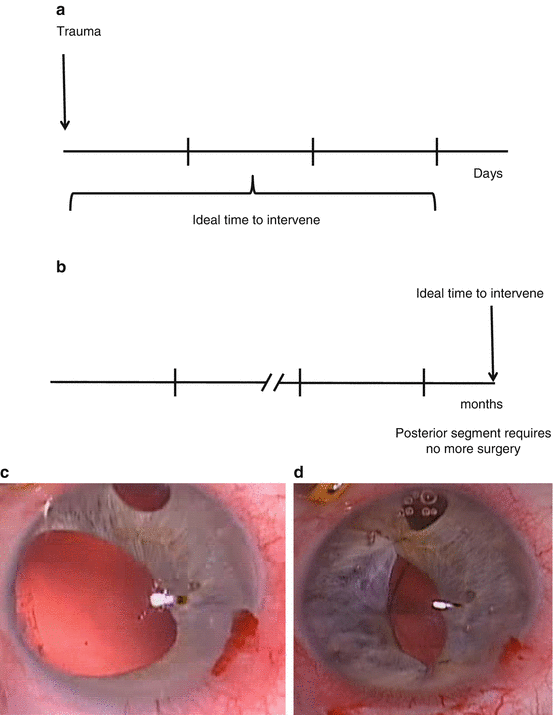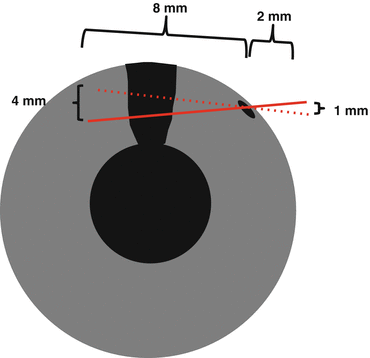(1)
St. Johns, FL, USA
(2)
Helen Keller Foundation for Research and Education, International Society of Ocular Trauma, Birmingham, AL, USA
(3)
Consultant and Vitreoretinal Surgeon, Milos Eye Hospital, Belgrade, Serbia
(4)
Consultant and Vitreoretinal Surgeon, Zagórskiego Eye Hospital, Cracow, Poland
48.1 General Considerations
48.1.1 The Important Functions of the Iris1
Regulating the amount of light reaching the retina.
Persons with a permanently wide pupil (and good retinal function) complain of photophobia, which may be prohibitively bothersome.
Separating the anterior and posterior compartments of the eye.
This used to be important to prevent VEGF-like factors from entering the AC and making new vessels grow anteriorly; now the main purpose is to prevent silicone oil touch.
The iris is increasingly used as a secure platform to carry an IOL (see Sect. 38.6).
Last but not least, the iris is important cosmetically.
Cosmesis is an often-neglected issue, although for many people it has great significance.
The VR surgeon is frequently the one who needs to restore the iris diaphragm, irrespective of whether the tissue has been traumatized by an injury or a therapeutic intervention.2 Three conditions are discussed in detail in this chapter.
48.1.2 Timing of Iris Reconstruction
Too early constriction of the pupil, or making it too narrow, may interfere with subsequent examination of, or surgery on, the posterior segment. With one exception, the general rule is that surgery on the iris should be delayed until the retinal condition is assumed to be “final.” The exception concerns the trauma-related “disappearance” of the iris (see Fig. 48.1).


Fig. 48.1
The “bimodal” timing of iris reconstruction. (a) In a traumatized eye with a “disappeared” iris, the intervention should be very early to break the fibrinous membrane that retracts the tissue, using a forceps to pull the iris toward the center. (b) In all other cases of a too wide pupil, it is best to suture the dilated iris only after the condition of the posterior segment is reasonably deemed “final”; this may be weeks or months, possibly even years away. (c) An example of the “disappearing iris” after trauma; the eye underwent silicone oil explantation due to PVR years before. (d) Very early intervention (the iris was gently pulled with forceps) during the original surgery resulted in a cosmetically and functionally acceptable outcome. The iris was finally sutured after oil removal
Pearl
An iris that has disappeared after a severe open-globe injury may indeed have been expelled. However, it is often invisible simply because it retracted from view. This is a condition that needs to be addressed early; otherwise the fibrinous membrane, pulling the iris back toward its root, may become a fibrotic one. With a forceps the surgeon can gently pull the iris toward the center, 360°. Once the membrane turned fibrotic, the only solution left is the implantation of an iris prosthesis.
48.2 Surgical Technique
The most commonly used suture is a 10/0 (occasionally 9/0) polypropylene thread attached to a long straight (STC-6) or curved (CIF-4) needle.3 The former is rather difficult to handle since the target tissue is typically quite far from the paracentesis; the further the tip of the needle is away from the fulcrum at the limbus, the more a small movement on the outside will cause a large one inside (see Fig. 48.2).


Fig. 48.2
The needle-related difficulty of iris suturing. If the intracameral portion of the needle is 4 times as long as the portion external to the limbus, a 1 mm needle movement on the outside will result in a 4 mm movement of the needle’s tip – and in real life it is a three-dimensional issue. (The needle length is proportionally illustrated here)



